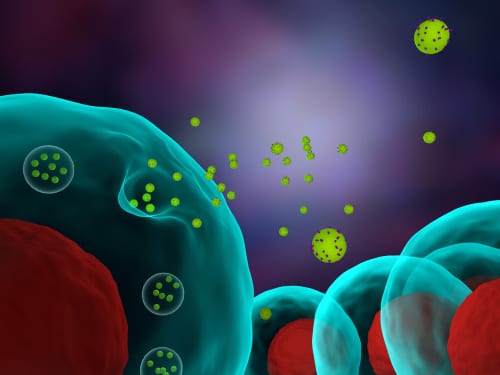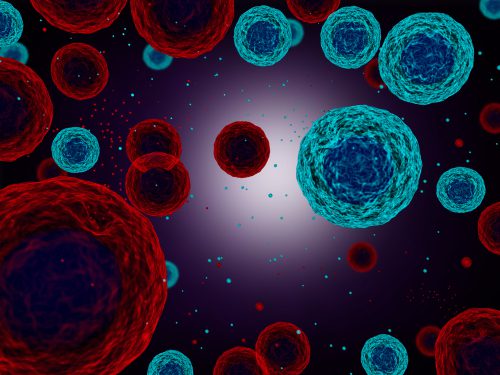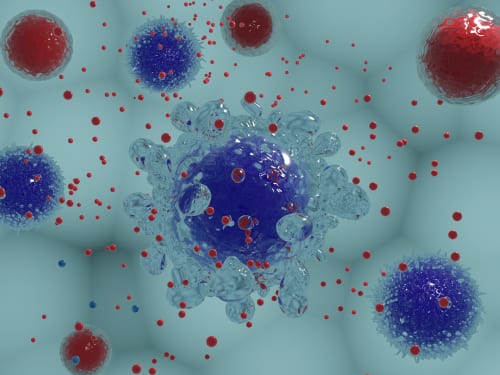There has been a lot of hype in the medical world about a new miracle treatment that purports to treat multiple medical conditions and diseases…. So what are these mysterious exosomes anyway?
What are Exosomes?
Originally thought to be cellular debris, these nanoparticles were further characterized in 1987 as small vesicles that are formed by and bud off of stem cells in the body. Then around 2007 these small vesicles became more interesting when it was discovered that exosomes contain information about the mother cell including messenger RNA, DNA and other cargo. These interesting nanoparticles are released by stem cells with their precious cargo and deliver important signals and information to surrounding cells.

Exosomes and their role in the micro-/macro-environment: a comprehensive review
What do Exosomes Do?
Think of these vesicles as soldiers that are sent out from their commander, the stem cell, with important messages and instructions, called mRNA for surrounding troops or cells, that signal to them what to do. So this could potentially be helpful in healing of tissue and repair of injuries, right?

Can and should Exosomes be used in Regenerative Medicine? Why or why not?
While this sounds like a good idea for regenerative medicine, there are several issues. The first issue is that exosomes produced by stem cells in a culture medium are like soldiers being sent out without orders or instructions, because the stem cells have not given the vesicle specific instructions for healing and repair.
Basically these “soldiers” are dumb, they don’t contain the information needed to heal and repair tissue that is specific to the stem cell as opposed when they are created in an environment of injury and need of repair. So the soldier cannot communicate anything to other local cells when injected into areas of injury without the specific upload of information from the mother cell. This process and what specific messages these delivery particles contain is also still in need of extensive research, there is much that still needs to be learned about this process.
Exosomes and their role in the micro-/macro-environment: a comprehensive review
The second issue is that exosomes are not inherently good or bad, they are simply vehicles that relay messages and information that the mother cell sends out that can modify the function of surrounding cells. The messages and information that are relayed by these vesicles to other cells depends on the state of the mother cell or stem cell. For example exosomes derived from injured tissue may send messages for tissue repair, while exosomes released from a cancer cell may send messages that may contribute to further pathogenesis in cancer or other disease states, depending on the cell they originate from.

Exosomes in Research
One of the main interests in these nanoparticles in research is their ability to be used as biomarkers for disease and for potential use in drug delivery. While this concept is exciting further research is needed to understand exosomes and how they affect the cells they are delivered to as this is still poorly understood.
The biology, function, and biomedical applications of exosomes
So What is the Take Home Message?
Stem cells are amazing conductors that orchestrate the healing response by the body, one of the tools they use to conduct this symphony is producing exosomes when in an environment of injury that like soldiers, are sent out to communicate messages to other cells of healing and repair of tissue. These soldiers are only useful, though, when given specific instructions by the stem cell that has been activated by its environment of injury to start the healing process. Taking stem cells out of that environment causes the delivery particles they produce to be basically useless because they don’t have orders from above.
Exosomes are an amazing discovery and there is much ongoing research about how these vesicles work, what they communicate to other cells and how this might be useful in the medical field in the future. Although this is an exciting new field, more research is needed to more fully understand the intricacies of signaling and communication, and how they might be safely and effectively used in not only regenerative medicine and other fields.

Michelle Hall
PA-CPhysician Assistant



